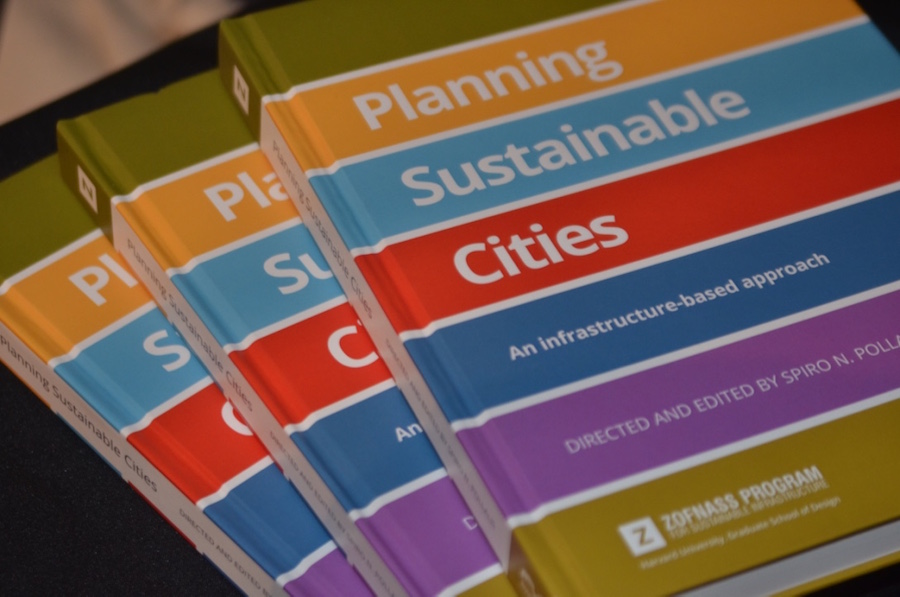Four years after helping launch the Envision infrastructure sustainability rating tool (ENR June 17, 2015), a Harvard University graduate school of design program has published a guidebook for municipalities in how to take an integrated approach to designing and building sustainable infrastructure in concert with urban planning.
While Envision allows public-sector infrastructure owners to measure long-term sustainability of single projects such as bridges, tunnels, water or energy systems, the new guidebook, entitled “Planning Sustainable Cities: An Infrastructure Based Approach,” provides tools for knitting those individual projects into a seamless and sustainable network.
Released last week by the university's Zofnass Program for Sustainable Infrastructure, the book focuses on infrastructure system performance and how to leverage synergies among buildings and other assets to minimize demands on infrastructure.
By minimizing demand on resources, an integrated infrastructure system is less expensive because it requires construction of fewer treatment plants, for example. A green infrastructure approach also reduces the need for sewers since it decreases storm water runoff.
The Harvard guidebook which includes several essays written by prominent construction industry professionals was edited and directed by Spiro N. Pollalis, a university professor of design and technology who runs the Zofnass Program. “A sustainable city should have a sustainable infrastructure,” Pollalis says, “and sustainable infrastructure should go hand-in-hand with the planning of the city.”
Pollalis also said urban planners shouldn’t “make decisions based on a single infrastructure project or a single infrastructure system, but look at multiple objectives at the same time.”
Erin Mosley, a contributor to the book and a vice president and deputy director of innovation and technology at CH2M Hill, said at a Nov. 3 and 4 conference at the school to launch the guidebook that it doesn't just provide suggestions and methodologies to officials, it also offers them the “confidence” to sell these ideas to constituents. “They can then refer back to Harvard University and the Zofnass Program when they are recommending this,” she said. “There’s a credibility to it. It helps create the conversation and the space for the conversation.”
Terry Bennett Autodesk senior industry strategist for civil infrastructure, said the guide helps urban planners look beyond their own training and experiences to think about alternative solutions. “It’s not a set of prescriptions about how to do it but it asks you questions that allow you to think differently about the approach,” Bennett said. “‘Should we consider this? And if we want to consider this what would be the next level? So it helps guide you through questions to ask to get the answers you need to do things differently.”
Bennett said when a new piece of infrastructure is being built, planners should think about how it will be repurposed at the end of its lifecycle, pointing to projects such as New York City’s High Line, which was erected on abandoned rail lines or the 11th Street Bridge Park in Washington, D.C that would be built atop four piers left behind when the bridge was replaced.
“If you start understanding how long the life expectancy is and plan for what you want it to become after that you can plan some of the capabilities in so it’s easily repurposed without a whole new effort,” Bennett said. “It’s those types of thought processes that the book helps walk you through.”
Envisioning the future
Founded in 2007, the Zofnass Program played a key role in developing Envision in tandem with three engineering associations: The American Society of Civil Engineers, the American Public Works Association and the American Council of Engineering Cos. Envision—which is managed and quasi-commercialized by the Institute for Sustainable Infrastructure—moved project sustainability beyond buildings when it launched in 2012.
The tool rates infrastructure projects in five categories: quality of life, leadership, natural world, resource allocation and climate and risk. Sixty possible credits are awarded to projects based on resource use, operation resilience, ecosystem restoration, life-cycle costs and return on investment. The program offers four project ratings: bronze, silver, gold and platinum.
Pollalis said 5,000 people worldwide now are credentialed in the Envision approach while 24 projects have achieved Envision certification in the U.S., with 19 more in the process. He also said Envision is being used on projects in Italy, Germany, Iran, Malaysia, Pakistan and Saudi Arabia.
The 356-page guidebook is an extension of the Envision rating tool but also takes the rating system to a new level, said Paul Zofnass, a design sector management consultant who founded the Harvard program in 2007. He said the book offers the first comprehensive approach to measuring sustainability as it applies to an entire city.
“It needs to be because building a city is just not one building,” he said. “It’s a community of living people and it’s going to have a big impact on the environment around it.”
Common ground
The Harvard conference, which had about 450 people registrants, included panel discussions on sustainability in key infrastructure sectors and how to make the “business case” for sustainable infrastructure.
To that point, Pollalis argued that sustainable projects are usually less expensive when lifecycle costs are considered. “Some sustainability elements are expensive but most are not,” he said.
The conference also explored how information technology and big data should be used to improve each infrastructure sector. Mosley said her conversations with clients about digital infrastructure start broadly before she asks them what piece of infrastructure they need to fix most.
“You need to have the vision but then you start with one particular place that is your biggest pain point and you can grow it from there,” Mosley said. “But you don’t want to start with a pain point without a vision. That’s where the planning guidelines come in; you understand how that piece can fit into the whole picture and you are able to move more fluidly between things.”





Post a comment to this article
Report Abusive Comment